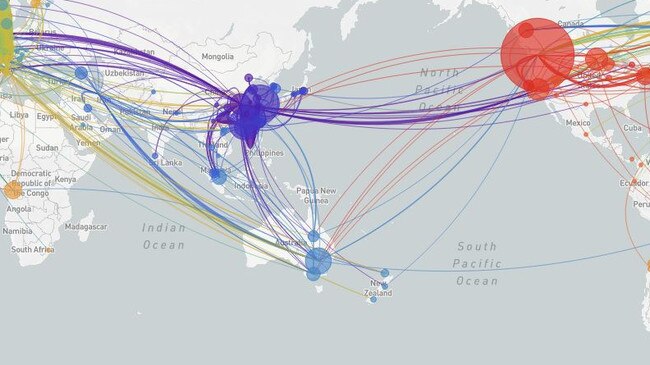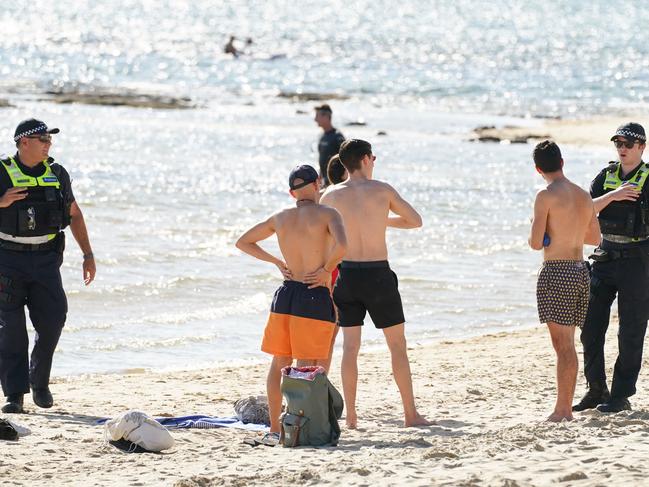Eight strains of the coronavirus are circling the globe and scientists are learning from the clues
Researchers believe there are multiple strains of COVID-19 circulating in countries around the world, including Australia.

National
Don't miss out on the headlines from National. Followed categories will be added to My News.
Australia is being smashed by multiple strains of the deadly coronavirus as scientists desperately try to track the spread of the disease across the globe.
A map created by scientists in the US shows that at least eight strains of the coronavirus are making their way around the globe, creating a trail of death and disease that scientists are tracking by their genetic footprints.
A variety of strains of COVID-19 have made their way into Australia, according to maps on Nextstrain.org, an online resource for scientists that uses data from academic, independent and government laboratories all over the world to visually track the genomics of the virus.

But the good news is that while the virus continues to mutate, the new strains do not seem to be becoming more lethal.
USA Today reports that labs around the world are using sequencing machines to rapidly sequence the genomes of virus samples taken from people sick with COVID-19.

The information is uploaded to a website called NextStrain.org that shows how the virus is migrating and splitting into similar but new subtypes.
“The virus mutates so slowly that the virus strains are fundamentally very similar to each other,” said Professor Charles Chiu from the University of California’s San Francisco School of Medicine.
Researchers believe the small differences between the virus strains suggest stay-at-home and isolate orders are being effective in some areas and that no one strain of the virus is more deadly than another.
COVID-19, also referred to by scientists as the SARS-CoV-2 virus, first began causing illness in China in November and December last year.
“The outbreaks are trackable. We have the ability to do genomic sequencing almost in real-time to see what strains or lineages are circulating,” Prof Chiu said.

The different strains of the virus found in Australia and around the world have almost certainly been passed on by international travellers.
While scientists are excited by the results of their research, they warn there is still a lot more to learn.
“Remember, we’re seeing a very small glimpse into the much larger pandemic. We have half a million described cases right now but maybe 1,000 genomes sequenced. So there are a lot of lineages we’re missing,” said Kristian Andersen, a professor at Scripps Research.
The virus is so good at transmitting itself between human hosts, said Andersen, it is under no evolutionary pressure to evolve.
While there remain many questions about the trajectory of the COVID-19 disease outbreak, one thing is broadly accepted in the scientific community: The virus was not created in a lab but naturally evolved in an animal host, USA Today reported.

The genomic molecular structure of the virus is closest to a coronavirus found in bats. Parts of its structure also resemble a virus found in scaly anteaters, according to a paper published earlier this month in the journal Nature Medicine.
Someone manufacturing a virus targeting people would have started with one that attacked humans, wrote National Institutes of Health Director Francis Collins in an editorial that accompanied the paper.
Dr Andersen was lead author on the paper. He said it could have been a one-time occurrence.
“It’s possible it was a single event, from a single animal to a single human,” and spread from there.
